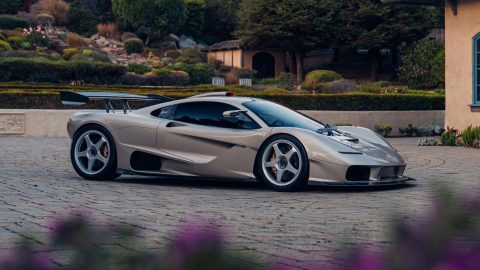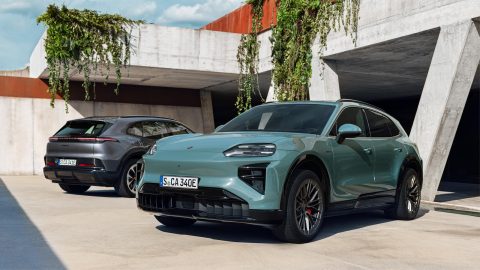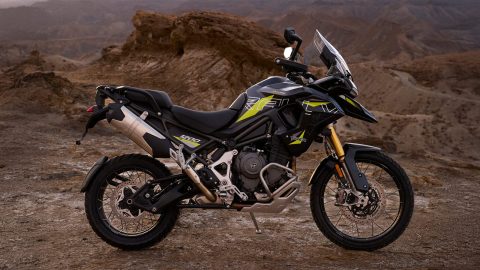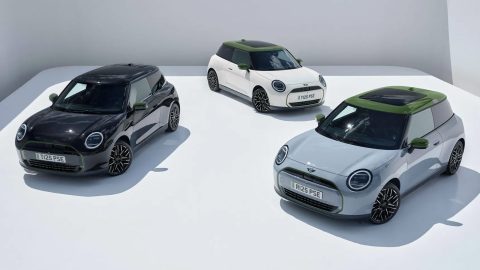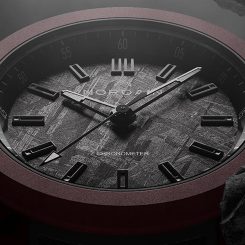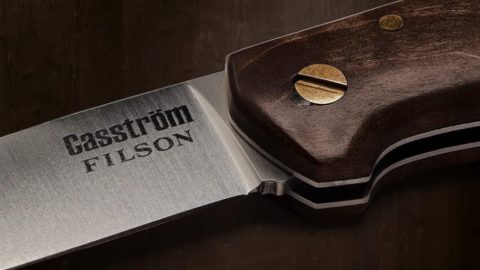They say that perfection only exists in ideals. There is no single example of a perfect movie, shape, government policy, pair of shoes, or unit of measurement to set the bar. It’s all subjective, so we all have our own vision of perfection for most nouns. Car companies are no different in developing technology that will provoke auto journalists to shower them with words of positivity and use that all-important word only that can only be used with the utmost care – perfect. For the Audi RS Avant, it’s a bit different. It’s a vehicle many fans deem perfect. However, this high-performance station wagon does not aim for perfection – it pursues it with all-wheel prowess.
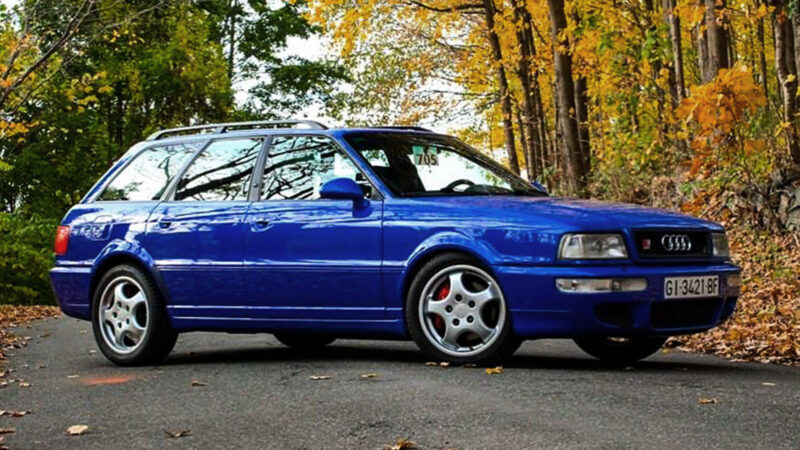
Now, it is impossible to design and engineer the “perfect car” because the needs and wants of car buyers are too vast to fit into one vehicle. A perfect vehicle would have to carry a family, handle like a sports car, manage all-weather conditions like a 4×4, be economical like an EV, look as stylish as a supercar, and cost no more than a mid-range hatchback. Oh, and have the storage and towing capacity of a pickup truck. Hence, why automakers offer a range of different vehicles, with some having a Russian nesting doll collection of SUVs and crossovers that seem to differ only in size, but I digress. When Audi decided to produce a station wagon with Quattro performance, they called Porsche. The result of this joint venture would create one of the most desirable wagons in automotive history, the Audi RS2 Avant.
Before we continue, the word “Avant” is Audi’s word of choice for its estate/station wagon vehicles. Audi did release these RS models in sedan (saloon) configuration, but for the sake of this article, we will be focusing only on the Avants. Few people in North America have ever seen a real Audi RS Avant. Because the RS Avant was never introduced to the U.S. market until recently in 2020. With the 25-year import law finally aged out, the original 1994-1995 Audi RS2 Avant is old enough to visit the USA. So it’s time to brush up on why this European station wagon is coveted so much by the shooting brake community.
The First Audi Avant by Porsche
By the end of 1986, the FIA had canceled the Group B rally class after the deaths of drivers, co-drivers, and spectators started to mount. However, Audi had shown the world what its Quattro all-wheel-drive system could do, and it was time to bank on this publicity. However, rather than building another limited-production street-legal variant of their Group B race car, Audi wanted to give the consumer something more practical – an estate car with the power of a rally car.
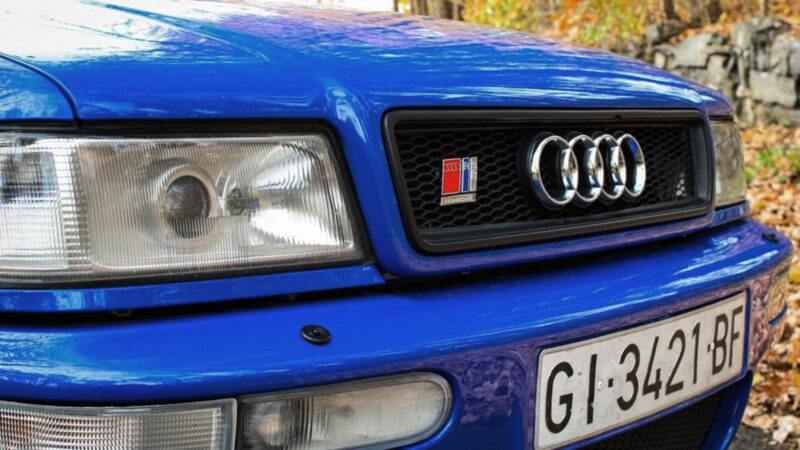
Audi needed help in taking its Quattro system and turning an ordinary family wagon into a super sleeper. By 1992, Porsche was flirting with bankruptcy and needed a helping hand that Audi was happy to extend – for a price. The deal was simple; Audi would help keep Porsche out of the poor house in exchange for assistance in engineering the world’s fastest station wagon. The results of this collaboration produced Audi’s first RS model – the RS2 Avant. In 1993, Audi’s only offering of a sporty wagon was the Audi 80 Avant S2 (B4). This Quattro-powered wagon had the same 230-hp turbocharged engine from the S2 Coupe, making it the perfect base for Audi’s vision.
Audi shipped the Avant S2 station wagons to Porsche’s Rössle-Bau plant in Zuffenhausen, Germany. In 1993, this plant was finishing the last production year of the legendary Porsche 959. Porsche fitted the Audi 80 wagon with brakes, wheels, and tires from a Porsche 968 Clubsport. Under the hood, Porsche’s engineers went to work on Audi’s 2.2-liter turbocharged five-cylinder engine. The first thing to go was the standard KKK-turbocharger in favor of a larger unit with a larger, heavy-duty intercooler. The engine also received a new camshaft, high-flow fuel injectors, low-pressure exhaust system, and upgraded induction system. Porsche also ditched the car’s factory engine control unit (ECU) in favor of a specialty tuned unit provided by Bosch. In addition, Porsche added a six-speed manual transmission to get the absolute most out of the wagon’s new performance.
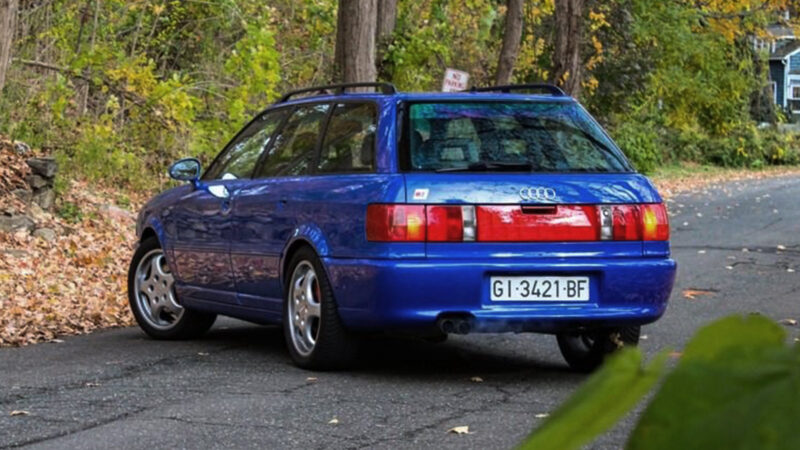
By March 1994, the Audi 80 Avant S2 was reborn into the RS2, a 160 mph family station wagon. Stats on this 3,500-pound German sleeper quickly started turning heads and opinions, with 315-hp and 302 lb.-ft of torque funneled through an all-wheel-drive system. In 1995, Autocar magazine published a 0 to 30 mph time on the RS2 at 1.5-seconds, which was faster than the McLaren F1 supercar. Back in the 90s, the Audi RS2 Avant was infamous for humiliating Lamborghini Countach and Corvette C5 owners at street lights while carrying a trunk full of groceries, and it was only the start. From March 1994 to July 1995, Audi produced 2,891 RS2 Avants – none of which arrived in the United States.
The Bi-Turbo Sequels – the RS4 and RS6
The second evolution of the Audi RS Avant wagon didn’t arrive until 1999 as a 2000 model year. Like an action movie sequel, Audi brought back the Avant with more of what people enjoyed about the first one. It had more cylinders, more turbos, and of course, more power! The 2000 Audi RS4 Avant debuted with a 2.7-liter twin-turbocharged V6 producing a healthy 375-hp. In 2002, Audi unveiled a new top-tier variant called the Audi RS6 Avant. The RS6 flexed a bigger wheelbase and a twin-turbo 4.2-liter V8, cranking out 450-hp. Moreover, two years later, Audi released the 2004 Audi RS6 Plus Avant with 473-hp thanks to additional coolant radiators and an ECU tune. In addition, the RS6 Plus offered Dynamic Ride Control as standard to cope with the added power.
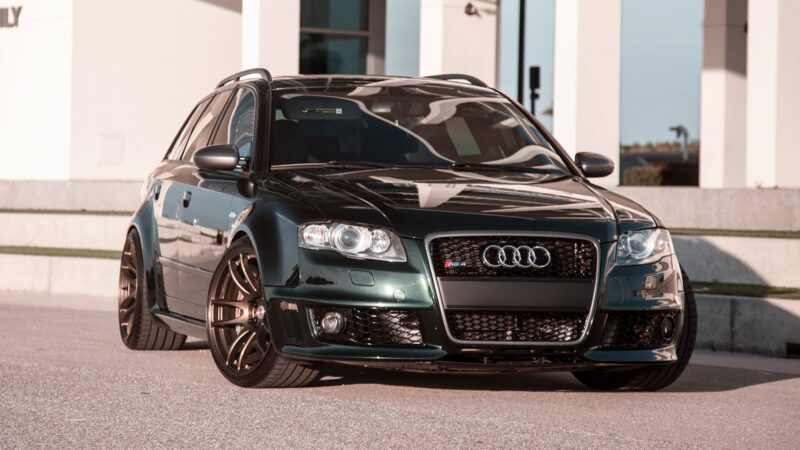
After 2004, Audi switched focus between the RS4 and RS6 Avant, like alternating storylines in a TV show’s season throughout the 2000s and 2010s. With each generation of the RS4 and RS6, Audi kept increasing the power output. Most notably, in 2008 when Audi released the RS6 Avant with a whopping 580-hp twin-turbocharged V10 engine derived from the Lamborghini Gallardo. This model was literally a supercar-powered station wagon.
However, in 2017, Audi ditched the V8 power plant in the RS4 Avant for a twin-turbocharged 2.9-liter V6. The more efficient V6 keeps the Avant’s 450-hp output and increased torque figures by 125 lb.-ft. In addition, the seven-speed dual-clutch automatic transmission gained another gear. The Audi RS6 Avant offered European buyers a twin-turbocharged 4.0-liter V8 with 553-hp and a zero to 60mph time under four seconds during the same year.
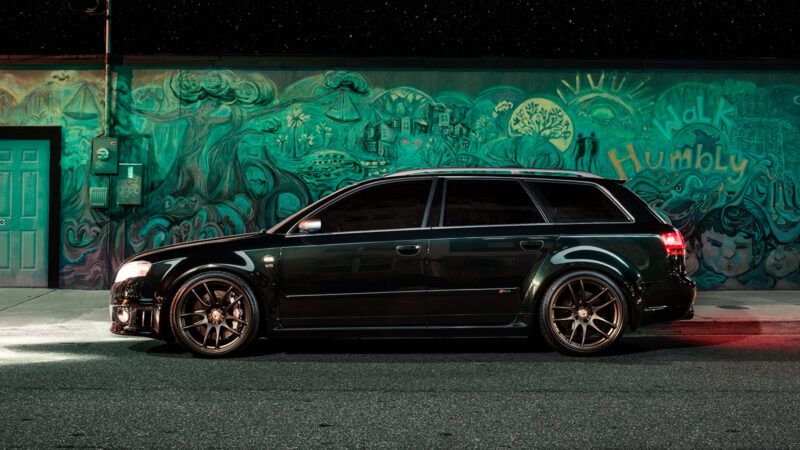
The 2021 Audi RS4 Avant still offers the 450-hp twin-turbo V6 and eight-speed S-Tronic transmission. In 2020, Audi announced that the RS6 Avant would be coming to the U.S. market. Finally, after nearly three decades, American car buyers would have a chance to feel the Avant’s Autobahn power. This 2021 Audi RS6 Avant is powered by a twin-turbocharged 4.0-liter V8 combined with a 48-volt mild-hybrid system producing 591-hp and 590 lb.-ft of torque. It’s a wagon that will sprint from zero to 100 mph in 12 seconds. Moreover, its top speed ranges from 155 mph to 190 mph, the latter of which is achieved only with the optional carbon-ceramic brakes.
Nogaro Blue Persuasion – Special Edition RS Avants
Throughout the Audi RS Avant’s history, there have been two limited-edition models in honor of the first RS2. The first one was released in 2014 to celebrate the RS2 Avant’s 20th anniversary. Like the original, these limited edition Avants wear Nogaro blue paint with matching blue Alcantara interior and blue stitching. Other cosmetic details included red brake calipers and black trim roof rails.
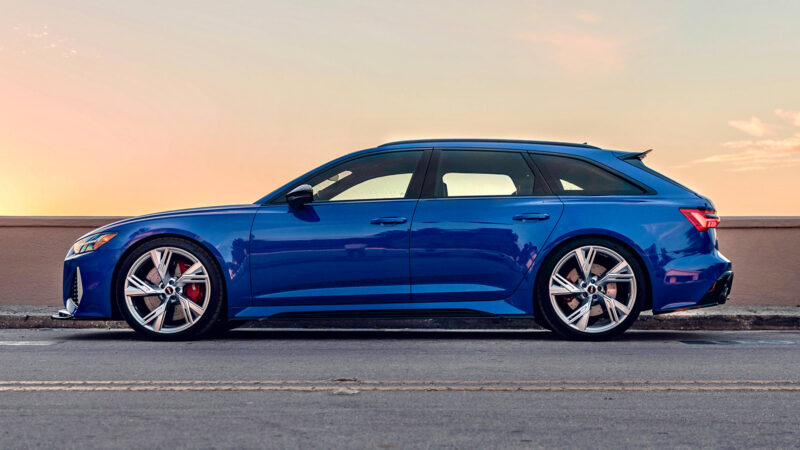
In 2021, Audi announced the RS Tribute Edition with a limited run of 25 examples for the U.S market. The 2021 Audi RS6 Avant RS Tribute Edition was first unveiled in 2020 as a concept design with black optic aero accents and its signature Nogaro Blue Pearl paint. In addition, the interior of the RS Tribute Avant features Audi’s Valcona S sport bucket seats, RS floor mats, and Denim Blue stitching in the upholstery.
Avants in America
With the original 1994-1995 RS2 Avant and late model 2021 RS6 Avant becoming available in the U.S. market, there is a new obtainable opportunity to own both in the same garage. At the moment, at least one Audi collector in North America has already achieved this prestigious feat. His name is Nish Pillai, and he is the proud owner of a 1994 Audi RS2 Avant and a 2021 Audi RS6 Avant RS Tribute Edition, both in Nogaro blue. Objectively speaking, Nish has two of the rarest high-performance station wagons ever made on his car insurance policy.
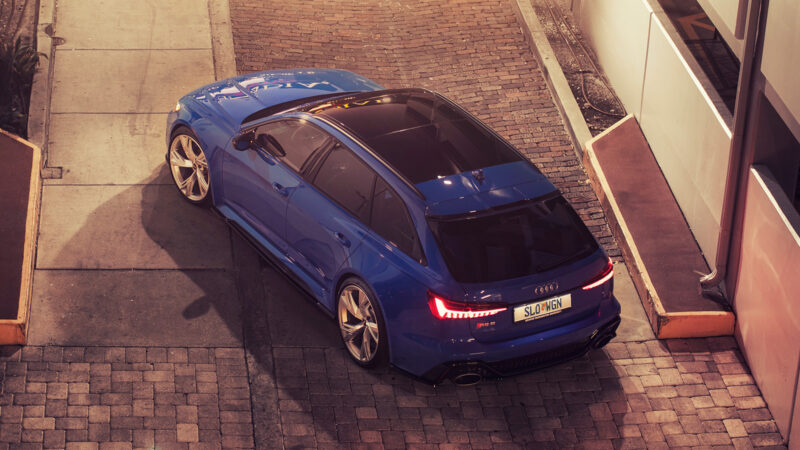
Moreover, Nish does not pride himself in keeping these wagons in a climate-controlled garage to be parked and babied for a future payday on Bring a Trailer. Instead, Nish and his wife Tara use these super wagons as intended, hauling groceries and car seats – quickly. You can read the full interview with Nish on how his lifelong passion for cars ultimately ended up with a collection of rare German station wagons here.
RS Avant EV?
Audi announced its plan to end the new development of internal combustion engines by 2026. This means the possible end of the blood-thirsty twin-turbo V8 and V6 sleeper engines powering the current Audi RS Avant models. So, naturally, it’s safe to assume that Audi may one day announce a next-gen RS Avant with a 1,000-hp battery pack and Earth rotating torque numbers as a high-performance electric wagon. The technology is there, and so is the market. Until then, if you spot an Audi station wagon, take a closer look to see if you spot an RS badge. The subtle clue to the howling wolf hiding under its sheep’s clothing.
In Pursuit of Perfection
We are not saying the Audi RS Avant is the perfect vehicle, but it is in constant pursuit. It’s hard to ignore a family vehicle that offers supercar performance. It tries to provide the best of multiple worlds, and for that, it’s a car in constant pursuit of perfection.



